Debate swirls after 300-year old Sycamore Gap tree chopped down
Locals mourning the tragic loss of a world-famous tree that was maliciously cut down are stuck in a heated debate over what to do next.
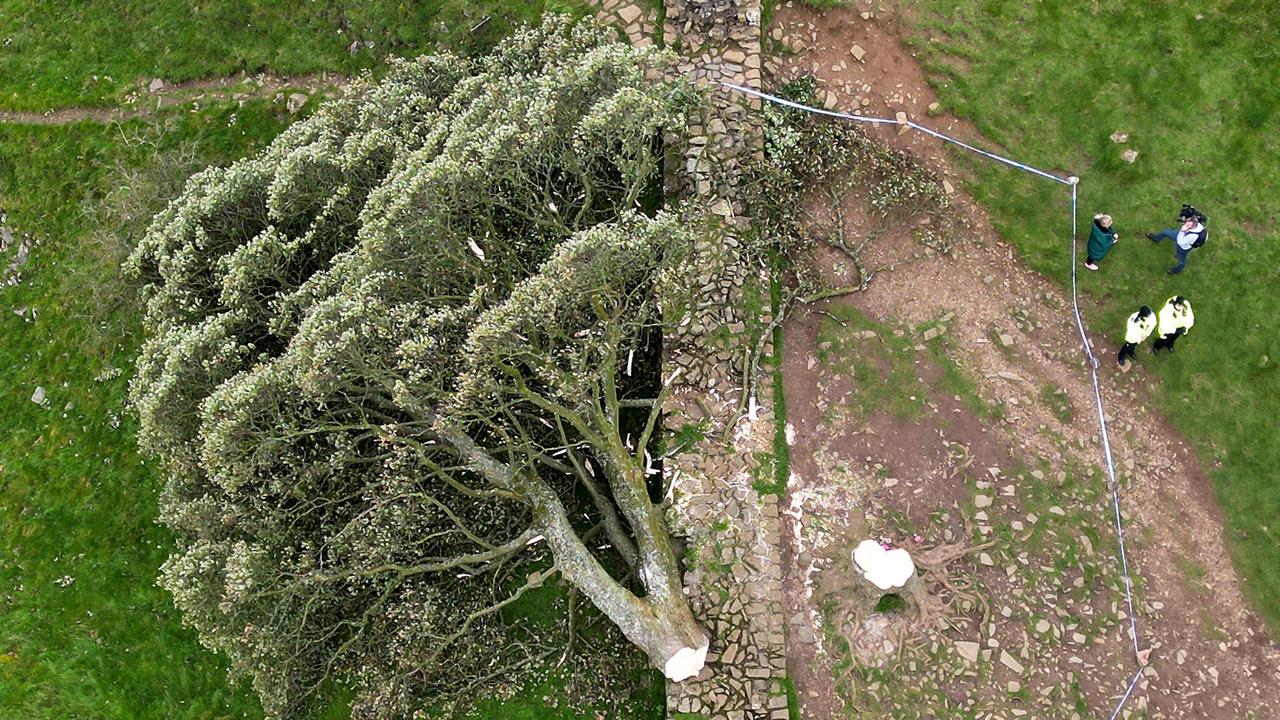
Devastated locals are entangled in a heated debate over what to do next after the world-famous Sycamore Gap tree was deliberately chopped down.
The 21-metre tall iconic landmark located at Hadrian’s Wall in northeast England was found felled earlier this week, in a tragedy that has shocked the world.
A 16-year-old boy was initially arrested on suspicion of causing criminal damage after the tree was found cut on Thursday morning, and he was released on bail on Friday.
In a shocking update, Northumbria police then revealed that a man in his 60s had also been arrested over the slashing on Friday night and remains in police custody.
The natural beauty was believed to be over 300-years-old and was one of the most photographed trees in the world, also made famous after appearing in the 1991 movie Robin Hood: Prince of Thieves starring Kevin Costner and Morgan Freeman.
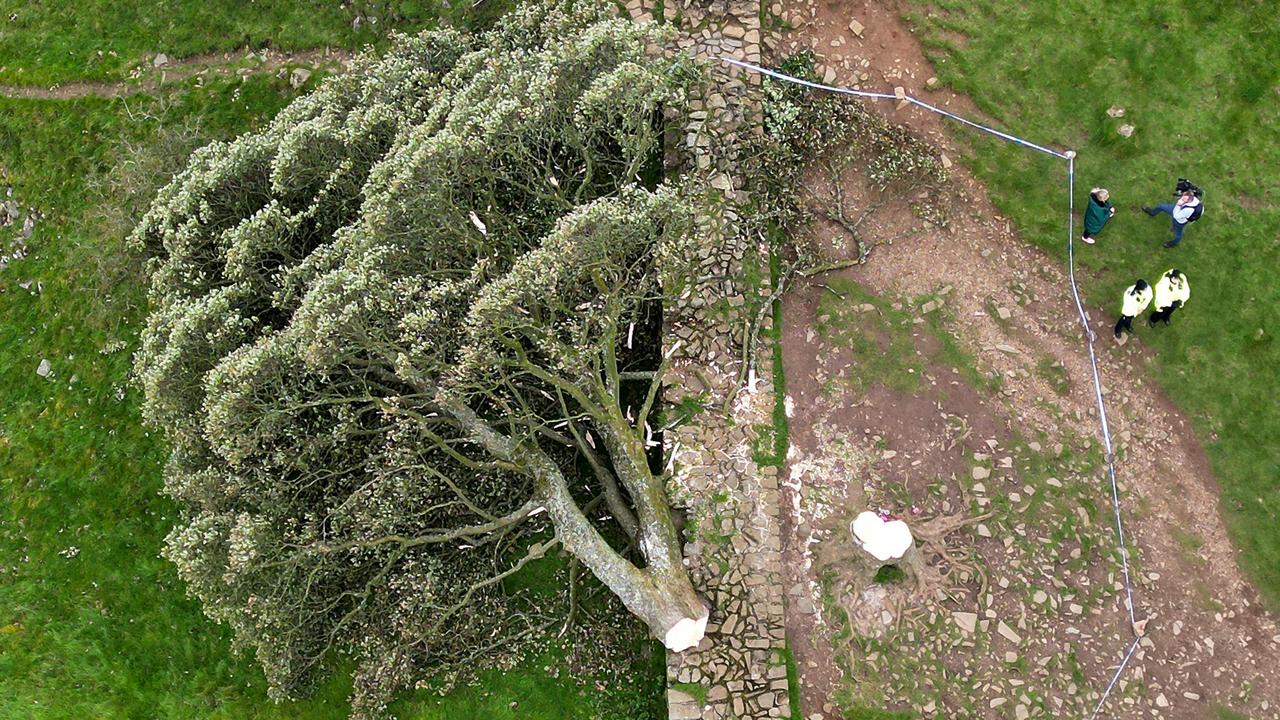
Heartbroken locals were left devastated at the monumental loss, with debates now swirling over what to do next.
According to reports, the most likely next step for the cut down tree is that experts will try to regrow it, or a memorial of some kind will be made from the tree’s remains.
While some experts say it could be possible to regrow the tree, others want the downed timber to be transformed into a memorial.
National Trust manager Andrew Poad told BBC Breakfast that the stump was “healthy” and that they might be able to coppice the tree, which is where new shoots grow from the trunk’s base.
“It’s a very healthy tree, we can see that now,” he said.
“Because of the condition of the stump, it may well regrow a coppice from the stump, and if we could nurture that then that might be one of the best outcomes, and then we keep the tree.”
Mark Feather, estate manager at the Woodland Trust, told the show that it might “take a few years to develop into even a small tree and around 150 to 200 years before it is anywhere close to what we have lost”.
“Once a tree of this age has gone, the sad truth is you can’t replace them within any visible time frame. It takes centuries,” he said.
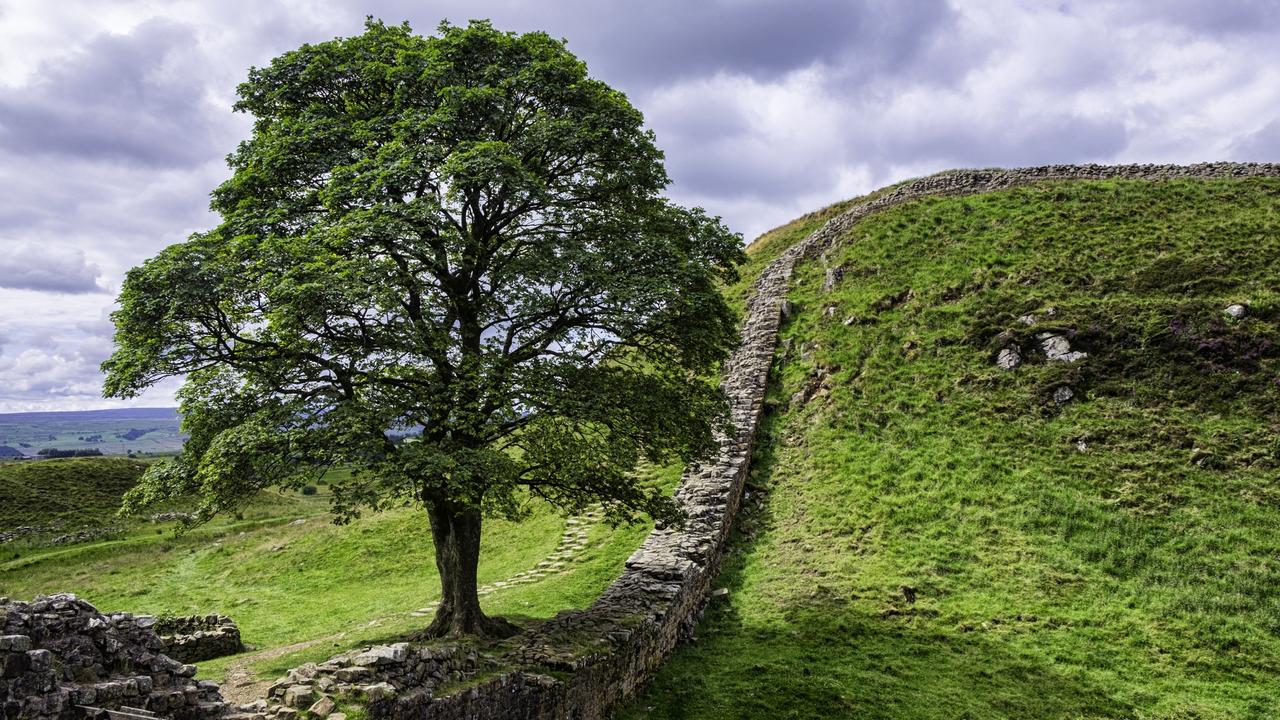
Rob Ternent, head gardener at the Alnwick Garden in Northumberland, added that the tree would start growing again but “won’t ever be the same shape or as good of a tree as it was”.
“It’ll be very difficult to get it back to the original tree,” he said.
“The growing season’s coming to an end now but by spring next year it will have some life in it. It’ll probably be about 8ft tall, but it’ll be lots of singular branches, more bushy.”
Locals expressed their grief to The Guardian and explained that the living nature of the landmark meant it was a unique and even more devastating loss than if it had been a man-made structure.
“I’m bereft,” said Dan Jackson, local historian and author of The Northumbrians.
“Unlike so many landmarks in the northeast – the Tyne bridge, the Angel, Durham Cathedral – this was a beautiful living thing, perfectly situated in one of the world’s great historic landscapes.”
Local artist Alfie Joey agreed, saying “If someone took an angle grinder to the Angel of the North, it would be awful, but you could put it back up. You can’t put a tree back up.”
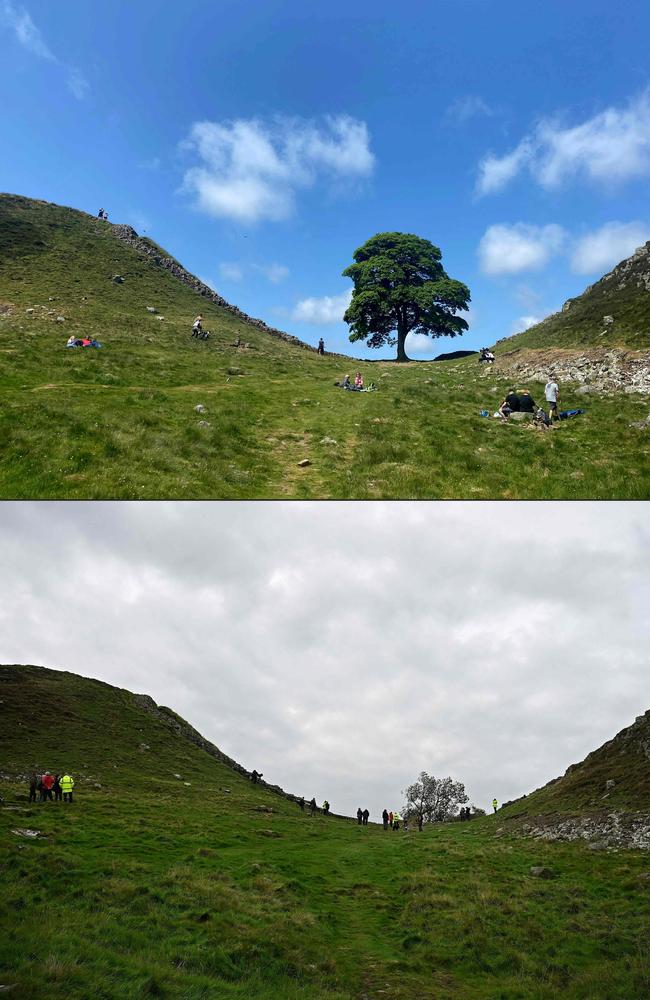
Much of the responsibility of the loss falls on the shoulders of Tony Gates, chief executive of the Northumberland National Park Authority, and his team, who are based in the Sill, a visitor centre built in 2017.
On Thursday morning, Gates told The Guardian that he was alerted to the felling by a phone call from his team.
At the time, he assumed it had been due to storm Agnes passing over the region.
“Maybe it was its time,” he remembered thinking.
“It’s a living thing, a natural thing.”
But 20 minutes later, he got another call and realised it had been deliberately cut down.
“This was part of the cultural identity of northeast England. People are going to be really upset,” he said.
“They’re going to feel like it’s an insult to the cultural heritage of the region. It’s almost like taking part of the identity of the place away. And that’s before you get to the personal connections people had.”
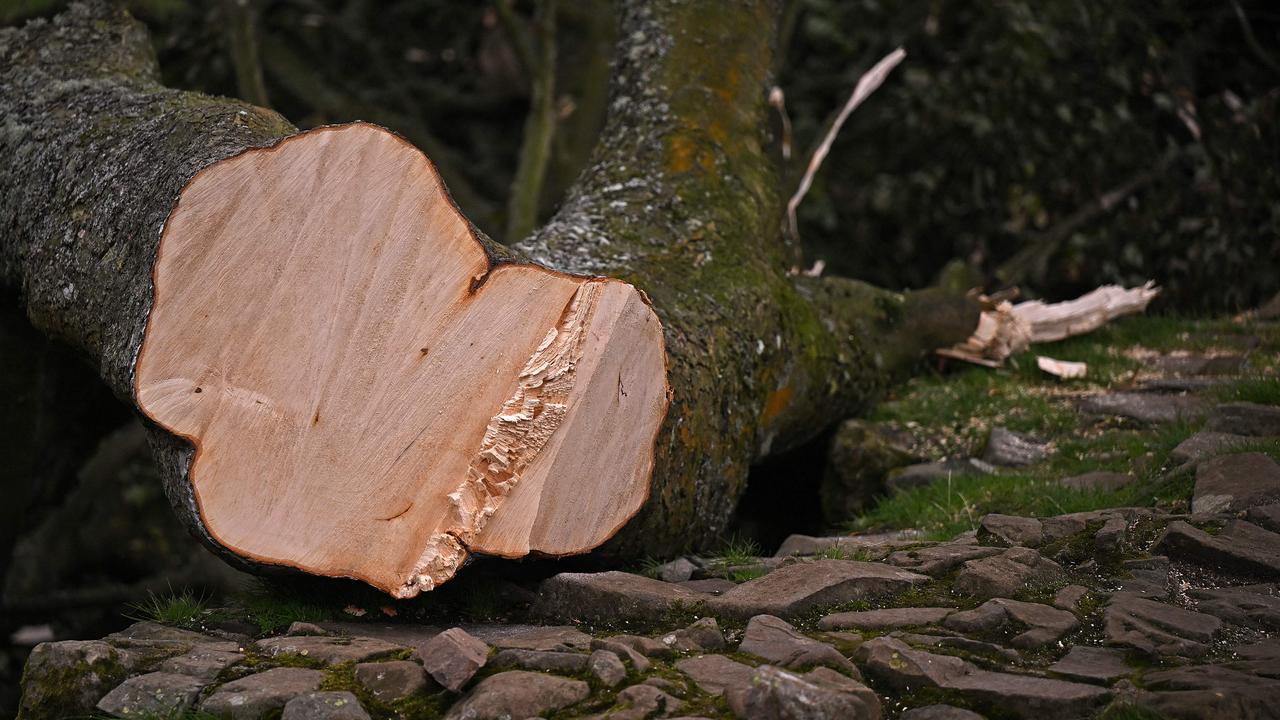
Gates has since been inundated with offers of support, and suggestions of what to do next, however he expressed that it was simply too soon to decide yet on the next steps.
The felling of the tree shocked the world and left locals in the area reeling.
“There’s a real sense of sadness in the air,” said Helen-Ann Hartley, the bishop of Newcastle, who visited the site on Friday morning.
“It reminded me of the rawness of the landscape. It was just heartbreaking and almost unreal to see the tree felled.”
She added that it had “survived all sorts of storms and extremes of weather”, and had “a lot of life events” bound up in it.
Local Kathryn Read told the outlet that she took her Austrian-born boyfriend, now her husband, to Sycamore Gap on his first visit to the UK in 2002.
It was a formative moment in their relationship, and cemented their partnership.
Both are now distraught.
“It’s that level of disrespect for nature, and for something that’s been there for centuries,” she said.
“It’s not necessarily the physical object that people are sad about,” explained local Dru Dodd, who took his girlfriend to see the tree on their second date back in 2015.
“It’s the memories they have [of time] spent around that place.”
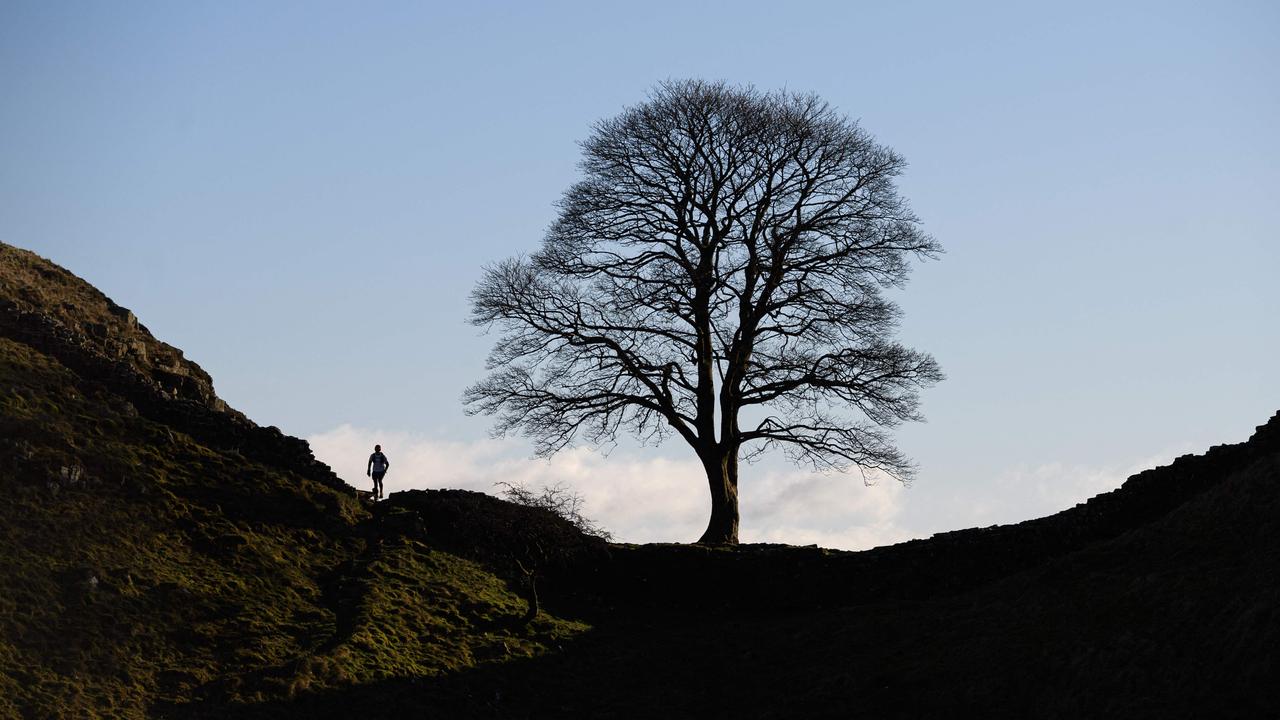
Social media has also ignited with anger and sadness from people around the world in response to the news of the tree being deliberately cut down.
Many have offered their suggestions of what should be done next in the wake of the tragedy, with some differing opinions causing heated debates online.
“Perhaps the tree could be turned into matchsticks or something, that could be sold to plant more trees,” one suggested.
“Though a shame it was cut down, it could grow back, though probably not as good as before,” another commented.
“Hopefully the wood can be used for a bench or something.”
“They could make use of the tree, like creating carvings and sculptures,” one added.
“They should preserve the leaves and carve walking sticks for people to use on the Hadrians wall walk.”
“There isn’t much point to regrow it,” another said,
“It’ll never be the same as before and will take hundreds of years.”
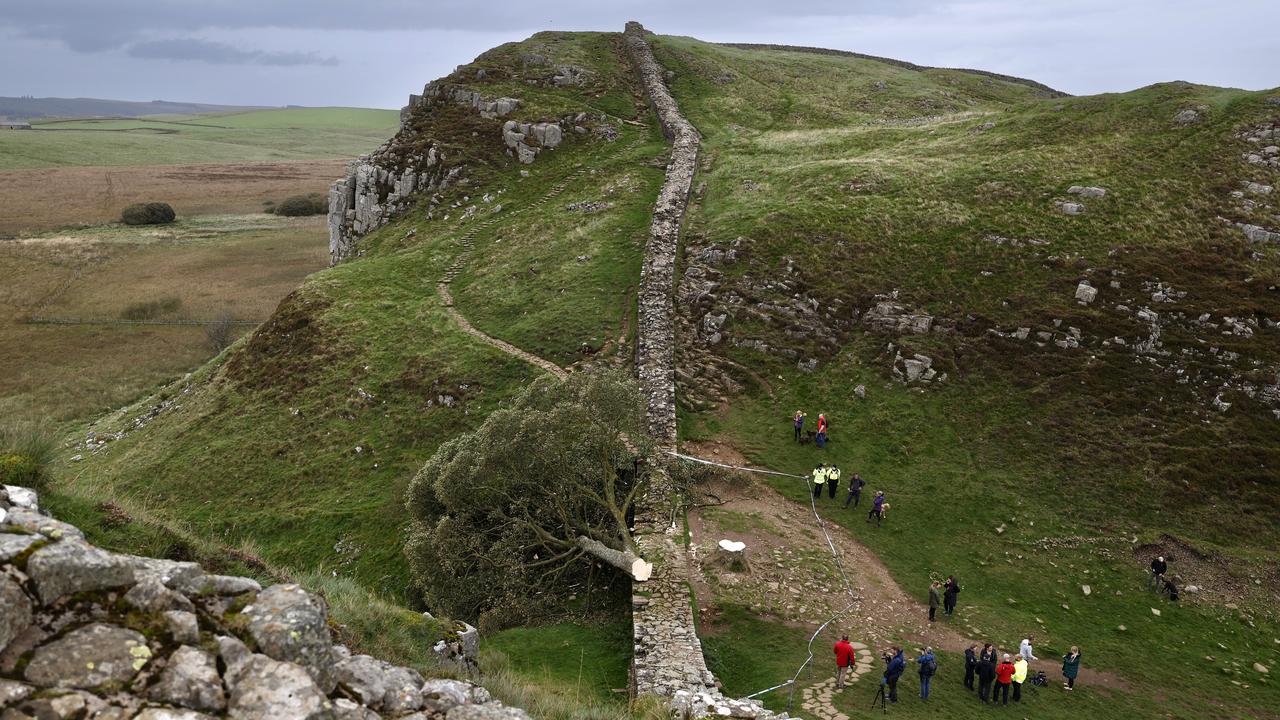
Police are continuing to investigate and have urged anyone with information to come forward.
“The senseless destruction of what is undoubtedly a world-renowned landmark – and a local treasure – has quite rightly resulted in an outpour of shock, horror and anger throughout the northeast and farther afield,” CI Rebecca Fenney-Menzies, of Northumbria police, said.
“I hope this second arrest demonstrates just how seriously we’re taking this situation, and our ongoing commitment to find those responsible and bring them to justice.
“Although another arrest has been made, this investigation is still in the early stages, and we would continue to encourage any members of the public with information which may assist to get in touch.
More Coverage
“If you have seen or heard anything suspicious that may be of interest to us – I’d implore you to contact us.
“I’d also like to remind the public that this remains a live investigation so, for that reason, please avoid any speculation both in the community and on social media.
“Any information – no matter how small or insignificant you think it may be – could prove absolutely crucial to our inquiries.”






